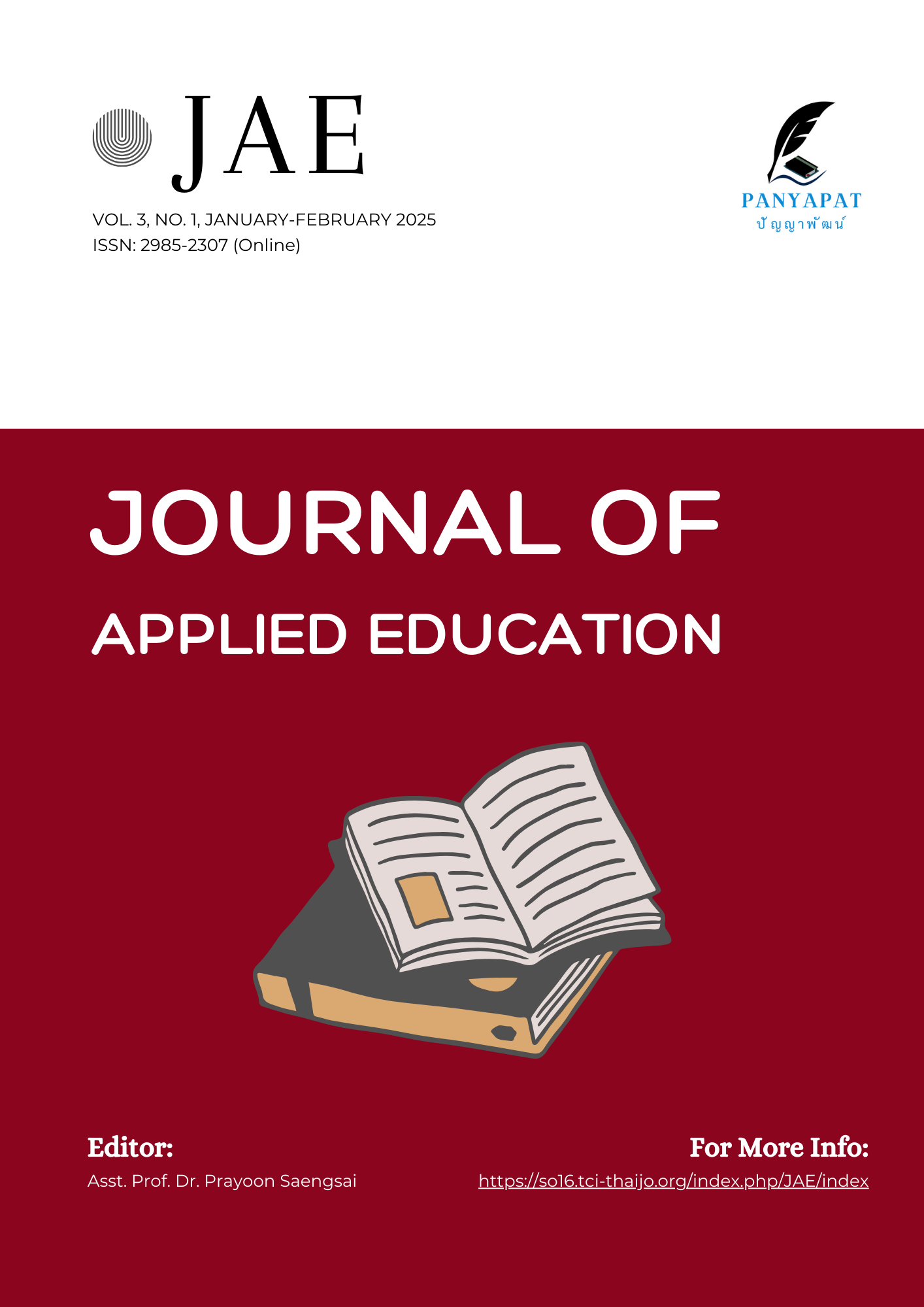The Comparison of Achievement in Social Studies (Geography) on Geographical Knowledge primary 2 Students
Main Article Content
Abstract
The objective of this research is to: (1) developing and evaluating the effectiveness of an Experience Enhancement Book series titled Exploring the World with Geography for Grade 2 students, ensuring its effectiveness meets the predetermined 80/80 criterion, and (2) comparing the learning achievement in the social studies subject, specifically geography content on Geographical Knowledge, among Grade 2 students taught using the book series versus conventional teaching methods. The sample consisted of Grade 2 students from Wat Pratumtayakaram School during the second semester of the 2024 academic year, selected through cluster random sampling by lottery. The experimental group included 33 students from Grade 2/4 who were taught using the experiential learning book, while the control group comprised 33 students from Grade 2/3 who received conventional teaching, research instruments included: (1) the Exploring the World with Geography book series, (2) lesson plans on Geographical Knowledge, and (3) an achievement test on Geographical Knowledge with a reliability score of 0.92. The study utilized a two-group experimental design with pre- and post-tests, analyzing data using percentages, means, standard deviations, and independent sample t-tests. The findings revealed that: 1) The Exploring the World with Geography book series for Grade 2 had an effectiveness score of 81.17/83.50, surpassing the predetermined 80/80 criterion. 2) The learning achievement in social studies, specifically the geography content on Geographical Knowledge, of Grade 2 students taught using the experiential learning book series was significantly higher than that of students taught using conventional methods at a significance level of .05, aligning with the proposed hypotheses.
Article Details

This work is licensed under a Creative Commons Attribution-NonCommercial-NoDerivatives 4.0 International License.
References
กระทรวงศึกษาธิการ. (2542). พระราชบัญญัติการศึกษาแห่งชาติพุทธศักราช 2542. กรุงเทพฯ: คุรุสภาลาดพร้าว.
กาญจนา ศิริมูสิกะ. (2543). สังคมศึกษา : การสอนที่เน้นผู้เรียนเป็นศูนย์กลาง. ปัตตานี: คณะศึกษาศาสตร์ มหาวิทยาลัยสงขลานครินทร์ วิทยาเขตปัตตานี.
ชะนิตรา คำหม่อง และ สิริพัชร์ เจษฏาวิโรจน์. (2566). การเปรียบเทียบผลสัมฤทธิ์ทางการเรียนวิชาภาษาไทย เรื่อง ส่วนประกอบของคำพูดของนักเรียนชั้นประถมศึกษาปีที่ 5 โรงเรียนอนุบาลพะโต๊ะ ที่ได้รับการสอนโดยใช้หนังสือเสริมประสบการณ์กับการสอนแบบปกติ. วารสารการพัฒนาการเรียนรู้สมัยใหม่, 8(7), 115-127.
ถวัลย์ มาศจรัส และ สุรางค์ เช้าเจริญ. (2554). คู่มือการใช้หนังสือส่งเสริมการอ่าน "หน่วยการเรียนรู้สืบสานภูมิปัญญาไทย" เพื่อพัฒนาการเรียนรู้ผู้เรียนและการพัฒนาผลงานทางวิชาการ. กรุงเทพฯ: ธารอักษร.
ทิพวิมล โพธิ์วัด. (2567). การเปรียบเทียบผลสัมฤทธิ์ทางการเรียนวิชาสังคมศึกษาของนักเรียนชั้นประถมศึกษาปีที่ 3 ระหว่างการสอนด้วยหนังสือเพื่อเสริมประสบการณ์การเรียนรู้เศรษฐศาสตร์จากใบตองและการสอนแบบปกติ. (ศึกษาศาสตรมหาบัณฑิต, มหาวิทยาลัยรามคำแหง).
โนรสามีมี มาน๊ะ, จิตติมา ชอบเอียด, โรสนี จริยะมาการ และ ศุภกิจ ประชุมกาเยาะมาต. (2564). การเปรียบเทียบผลสัมฤทธิ์ทางการเรียน เรื่อง สถิติ ของนักเรียนชั้นมัธยมศึกษาปีที่ 2 ระหว่างการเรียนแบบร่วมมือเทคนิค STAD กับการเรียนแบบปกติ. วารสารศึกษาศาสตร์ มสธ, 14(2), 55-74.
รังสิมันตุ์ ฉิมรักษ์. (2550). การเขียนหนังสือส่งเสริมการอ่าน. กรุงเทพฯ: สุวีริยาสาส์น.
อรนุช ลิมตศิริ. (2557). นวัตกรรมและเทคโนโลยีการจัดการเรียนรู้. (พิมพ์ครั้งที่ 6). กรุงเทพฯ: ภาควิชาหลักสูตรและการสอน คณะศึกษาศาสตร์ มหาวิทยาลัยรามคำแหง.
Hopkins, K. D. & Stanley, Julian, C. (1981). Educational and Psychological Measurement and Evaluation. Englewood Cliffs, NJ: Prentice-Hall.

